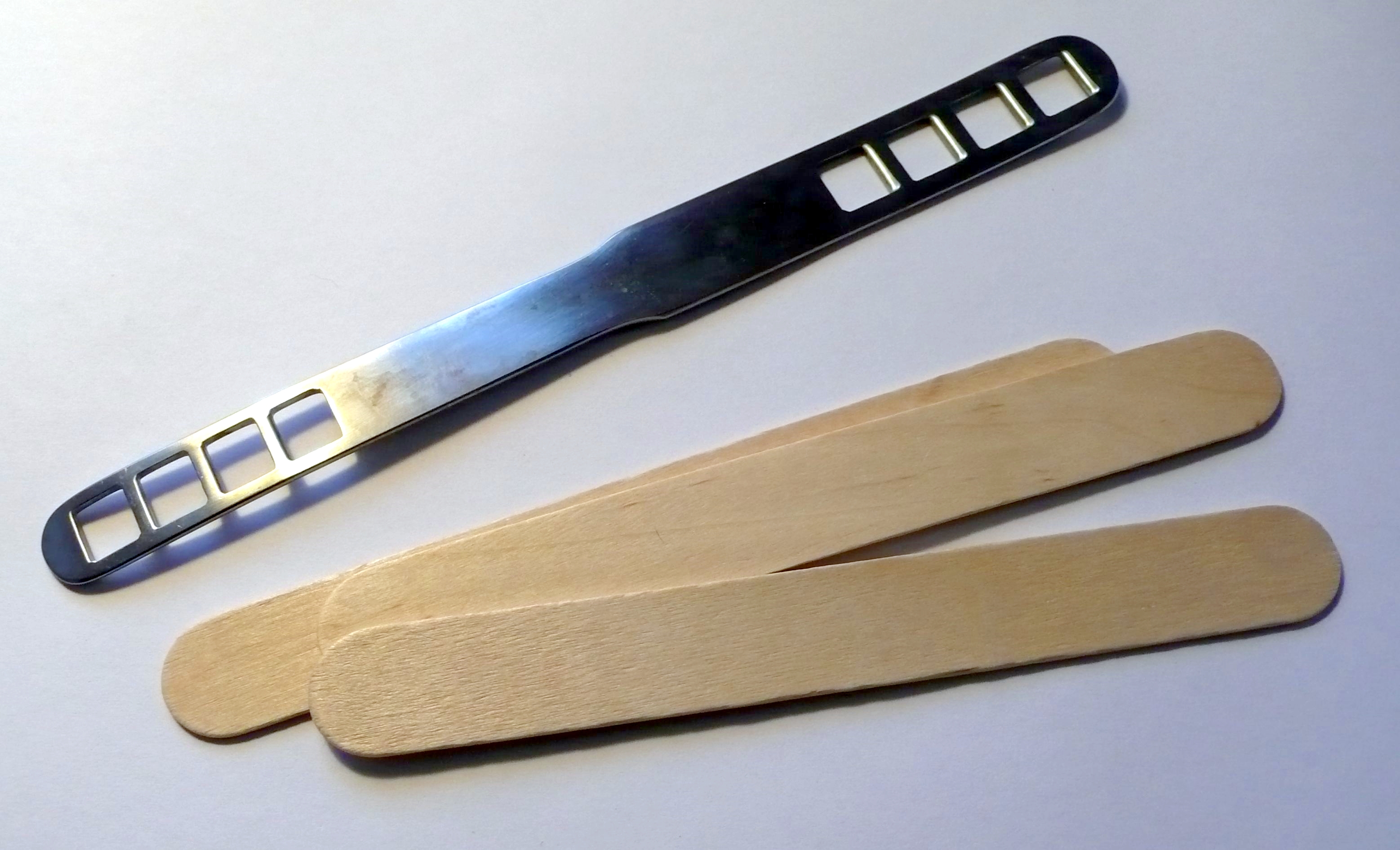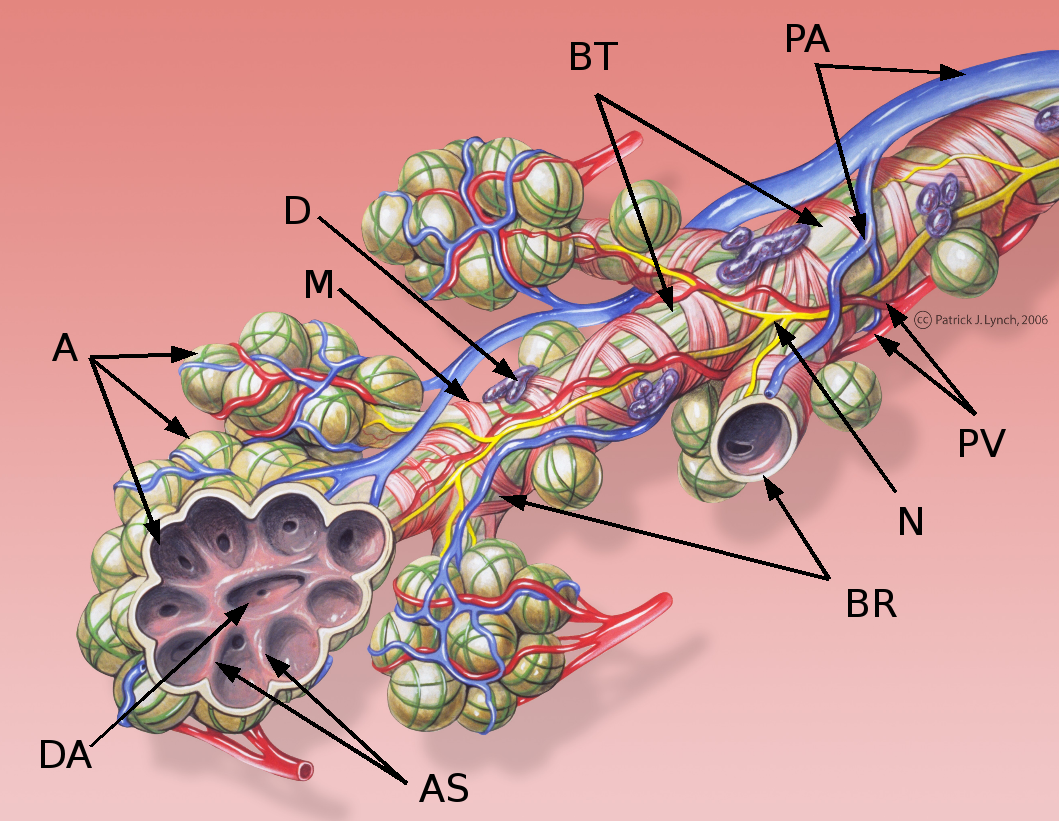|
Incentive Spirometer
An incentive spirometer is a handheld medical device used to help patients improve the functioning of their lungs. By training patients to take slow and deep breaths, this simplified spirometer facilitates lung expansion and strengthening. Patients inhale through a mouthpiece, which causes a piston inside the device to rise. This visual feedback helps them monitor their inspiratory effort. Incentive spirometers are commonly used after surgery or certain illnesses to prevent pulmonary complications. Overview Incentive spirometer is indicated for patients who have had any surgery that might jeopardize respiratory function, particularly surgery to the lungs, but also to patients recovering from cardiac or other surgery involving extended time under anesthesia and prolonged in-bed recovery. Under general anesthesia and inactivity, a patient's breathing may slow, causing air sacs in their lungs to not fully inflate. Atelectasis can develop and, if unmanaged, lead to pneumonia and postop ... [...More Info...] [...Related Items...] OR: [Wikipedia] [Google] [Baidu] |
Medical Device
A medical device is any device intended to be used for medical purposes. Significant potential for hazards are inherent when using a device for medical purposes and thus medical devices must be proved safe and effective with reasonable assurance before regulating governments allow marketing of the device in their country. As a general rule, as the associated risk of the device increases the amount of testing required to establish safety and efficacy also increases. Further, as associated risk increases the potential benefit to the patient must also increase. Discovery of what would be considered a medical device by modern standards dates as far back as in Baluchistan where Neolithic dentists used flint-tipped drills and bowstrings. Study of Archaeology, archeology and Roman medical literature also indicate that many types of medical devices were in widespread use during the time of ancient Rome. In the United States it was not until the Federal Food, Drug, and Cosmetic Act ( ... [...More Info...] [...Related Items...] OR: [Wikipedia] [Google] [Baidu] |
Asthma
Asthma is a common long-term inflammatory disease of the airways of the lungs. It is characterized by variable and recurring symptoms, reversible airflow obstruction, and easily triggered bronchospasms. Symptoms include episodes of wheezing, coughing, chest tightness, and shortness of breath. A sudden worsening of asthma symptoms sometimes called an 'asthma attack' or an 'asthma exacerbation' can occur when allergens, pollen, dust, or other particles, are inhaled into the lungs, causing the bronchioles to constrict and produce mucus, which then restricts oxygen flow to the alveoli. These may occur a few times a day or a few times per week. Depending on the person, asthma symptoms may become worse at night or with exercise. Asthma is thought to be caused by a combination of genetic and environmental factors. Environmental factors include exposure to air pollution and allergens. Other potential triggers include medications such as aspirin and beta blockers. Diag ... [...More Info...] [...Related Items...] OR: [Wikipedia] [Google] [Baidu] |
Incentive Spirometer2
In general, incentives are anything that persuade a person or organization to alter their behavior to produce the desired outcome. The laws of economists and of behavior state that higher incentives amount to greater levels of effort and therefore higher levels of performance. For comparison, a disincentive is something that discourages from certain actions. Divisions An incentive is a powerful tool to influence certain desired behaviors or action often adopted by governments and businesses. Incentives can be broadly broken down into two categories: intrinsic incentives and extrinsic incentives. Overall, both types of incentives can be powerful tools often employ to increase effort and higher performance according to the "law of behavior." Incentives are most studied in the area of personnel economics where economic analysts, such as those who take part in human resources management practices, focus on how firms make employees more motivated, through pay and career concerns, c ... [...More Info...] [...Related Items...] OR: [Wikipedia] [Google] [Baidu] |
Pinwheel (toy)
A pinwheel is a simple child's toy made of a wheel of paper or plastic curls attached at its axle to a stick by a pin. It is designed to spin when blown upon by a person or by the wind. History A similar toy had developed independently in Polynesia (known as ''pekapeka'' or ''peʻapeʻa'') using either coconut palm leaflets or strips of pandanus leaves; in colder climates like that of New Zealand (the toy also called ''pepepe'' in Māori), phormium leaves are used. Today's most popular style of pinwheels is rooted in East Asia. The design for example is typical of a japanese origami folding technique for a pinwheel. During the nineteenth century in the United States, any wind-driven toy held aloft by a running child was characterized as a whirligig, including pinwheels. Pinwheels provided many children with numerous minutes of enjoyment and amusement. See also * List of toys References External links How to Make a Pinwheelat wikiHow wikiHow is an online wik ... [...More Info...] [...Related Items...] OR: [Wikipedia] [Google] [Baidu] |
Pulmonary Alveolus
A pulmonary alveolus (; ), also called an air sac or air space, is one of millions of hollow, distensible cup-shaped cavities in the lungs where pulmonary gas exchange takes place. Oxygen is exchanged for carbon dioxide at the blood–air barrier between the alveolar air and the pulmonary capillary. Alveoli make up the functional tissue of the mammalian lungs known as the lung parenchyma, which takes up 90 percent of the total lung volume. Alveoli are first located in the respiratory bronchioles that mark the beginning of the respiratory zone. They are located sparsely in these bronchioles, line the walls of the alveolar ducts, and are more numerous in the blind-ended alveolar sacs. The acini are the basic units of respiration, with gas exchange taking place in all the alveoli present. The alveolar membrane is the gas exchange surface, surrounded by a network of capillaries. Oxygen is diffused across the membrane into the capillaries and carbon dioxide is released fr ... [...More Info...] [...Related Items...] OR: [Wikipedia] [Google] [Baidu] |
Incentive Spirometer
An incentive spirometer is a handheld medical device used to help patients improve the functioning of their lungs. By training patients to take slow and deep breaths, this simplified spirometer facilitates lung expansion and strengthening. Patients inhale through a mouthpiece, which causes a piston inside the device to rise. This visual feedback helps them monitor their inspiratory effort. Incentive spirometers are commonly used after surgery or certain illnesses to prevent pulmonary complications. Overview Incentive spirometer is indicated for patients who have had any surgery that might jeopardize respiratory function, particularly surgery to the lungs, but also to patients recovering from cardiac or other surgery involving extended time under anesthesia and prolonged in-bed recovery. Under general anesthesia and inactivity, a patient's breathing may slow, causing air sacs in their lungs to not fully inflate. Atelectasis can develop and, if unmanaged, lead to pneumonia and postop ... [...More Info...] [...Related Items...] OR: [Wikipedia] [Google] [Baidu] |
Aneurysms
An aneurysm is an outward bulging, likened to a bubble or balloon, caused by a localized, abnormal, weak spot on a blood vessel wall. Aneurysms may be a result of a hereditary condition or an acquired disease. Aneurysms can also be a nidus (starting point) for clot formation (thrombosis) and embolization. As an aneurysm increases in size, the risk of rupture increases, which could lead to uncontrolled bleeding. Although they may occur in any blood vessel, particularly lethal examples include aneurysms of the circle of Willis in the brain, aortic aneurysms affecting the thoracic aorta, and abdominal aortic aneurysms. Aneurysms can arise in the heart itself following a heart attack, including both ventricular and atrial septal aneurysms. There are congenital atrial septal aneurysms, a rare heart defect. Etymology The word is from Greek: ἀνεύρυσμα, aneurysma, "dilation", from ἀνευρύνειν, aneurynein, "to dilate". Classification Aneurysms are classified by ... [...More Info...] [...Related Items...] OR: [Wikipedia] [Google] [Baidu] |
Emphysema
Emphysema is any air-filled enlargement in the body's tissues. Most commonly emphysema refers to the permanent enlargement of air spaces (alveoli) in the lungs, and is also known as pulmonary emphysema. Emphysema is a lower respiratory tract disease, characterised by enlarged air-filled spaces in the lungs, that can vary in size and may be very large. The spaces are caused by the breakdown of the Alveolar wall, walls of the Pulmonary alveolus, alveoli, which replace the spongy Parenchyma#Lungs, lung tissue. This reduces the total alveolar surface available for gas exchange leading to a reduction in oxygen supply for the blood. Emphysema usually affects the middle aged or Old age, older population because it takes time to develop with the effects of tobacco smoking and other risk factors. Alpha-1 antitrypsin deficiency is a genetic risk factor that may lead to the condition presenting earlier. When associated with significant airflow limitation, emphysema is a Chronic obstructive ... [...More Info...] [...Related Items...] OR: [Wikipedia] [Google] [Baidu] |
Pneumothorax
A pneumothorax is collection of air in the pleural space between the lung and the chest wall. Symptoms typically include sudden onset of sharp, one-sided chest pain and dyspnea, shortness of breath. In a minority of cases, a one-way valve is formed by an area of damaged Tissue (biology), tissue, and the amount of air in the space between chest wall and lungs increases; this is called a tension pneumothorax. This can cause a steadily worsening Hypoxia (medical), oxygen shortage and hypotension, low blood pressure. This leads to a type of shock called obstructive shock, which can be fatal unless reversed. Very rarely, both lungs may be affected by a pneumothorax. It is often called a "collapsed lung", although that term may also refer to atelectasis. A primary spontaneous pneumothorax is one that occurs without an apparent cause and in the absence of significant lung disease. A secondary spontaneous pneumothorax occurs in the presence of existing lung disease. Smoking increases ... [...More Info...] [...Related Items...] OR: [Wikipedia] [Google] [Baidu] |
Hemoptysis
Hemoptysis or haemoptysis is the discharge of blood or blood-stained sputum, mucus through the mouth coming from the bronchi, larynx, vertebrate trachea, trachea, or lungs. It does not necessarily involve coughing. In other words, it is the airway bleeding. This can occur with lung cancer, infections such as tuberculosis, bronchitis, or pneumonia, and certain cardiovascular conditions. Hemoptysis is considered massive at . In such cases, there are always severe injuries. The primary danger comes from choking, rather than bleeding, blood loss. Diagnosis * Past history, history of present illness, family history ** history of tuberculosis, bronchiectasis, chronic bronchitis, mitral stenosis, etc. ** history of cigarette smoking, occupational diseases by exposure to silica dust, etc. * Blood ** duration, frequency, amount ** Amounts of blood: large amounts of blood, or there is blood-streaked sputum ** Probable source of bleeding: Is the blood coughed up, or vomited? * Bloody sput ... [...More Info...] [...Related Items...] OR: [Wikipedia] [Google] [Baidu] |
Flail Chest
Flail chest is a life-threatening medical condition that occurs when a segment of the rib cage breaks due to trauma and becomes detached from the rest of the chest wall. Two of the symptoms of flail chest are chest pain and shortness of breath. It occurs when multiple adjacent ribs are broken in multiple places, separating a segment, so a part of the chest wall moves independently. The number of ribs that must be broken varies by differing definitions: some sources say at least two adjacent ribs are broken in at least two places, some require three or more ribs in two or more places. The flail segment moves in the opposite direction to the rest of the chest wall: because of the ambient pressure in comparison to the pressure inside the lungs, it goes in while the rest of the chest is moving out, and vice versa. This so-called "paradoxical breathing" is painful and increases the work involved in breathing. Flail chest is usually accompanied by a pulmonary contusion, a bruise o ... [...More Info...] [...Related Items...] OR: [Wikipedia] [Google] [Baidu] |






